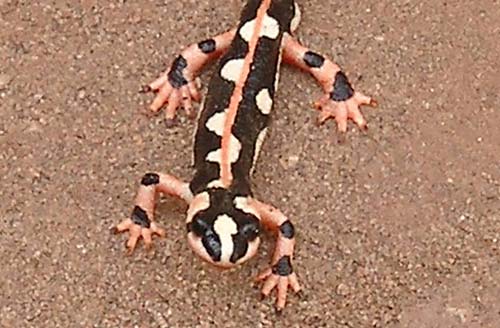
Photo courtesy TRAFFIC
The CITES meeting is underway in Qatar this week, with 175 member nations struggling to regulate international trade in everything from Atlantic bluefin tuna to elephant ivory, plus all kinds of other important stuff.
Getting less attention, but nevertheless interesting, is the story of the Kaiser’s spotted newt, an Iranian salamander. The species is critically endangered in the wild, believed to number fewer than 1,000 mature individuals.
The little amphibian also illustrates a new conduit for danger for wildife: the internet. The species is avidly sought by pet by collectors and wildlife enthusiasts, and its numbers have declined by more than 80 percent in recent years. Now it’s the first species under consideration for an Appendix I listing—the highest level of protection, which bans all commercial international trade in the species—under the Convention on International Trade in Endangered Species of Endangered Fauna and Flora (CITES).
WWF and TRAFFIC tell us that CITES governments will be considering whether or not to take a more proactive approach to regulating online trade, including:
- Creating an international database of the trade
- Implementing scientific research to gauge the correlation between wildlife loss and online trade
- Forging a closer collaboration with INTERPOL, the international law enforcement agency
In 2006, an investigation by TRAFFIC into the sale of Kaiser’s spotted newts revealed 10 websites claiming to stock the species. One Ukrainian company claimed to have sold more than 200 wild-caught specimens in a single year. The problem is the internet connects sparse sellers with sparse buyers willing to pay $300 for a newt, amplifying the troubles for wildlife.








